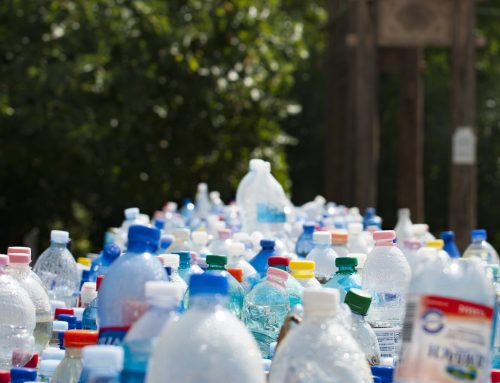Hi Sustainable Athlete!
Here at the foundation we put contributing to a more sustainable food system high on our menu. We love to educate you on this subject, so we’d love to share our current views about the athlete’s menu for tomorrow.
Currently, our atmosphere is heating up due to green house gas emissions. The food system, from production to consumption and waste treatment, contributes 20-30% to global greenhouse gas emission. 14-18% of these emissions are due to agriculture. And by 2050 we will have to provide almost 9 billion people with healthy and sustainably produced food. That is a task, to say the least! Therefore a Menu For Tomorrow is much needed, also for athletes. How does it look like and which changes need to be made?
Nutritional Value vs Environmental Impact
First of all, it’s important to note that composing healthy diets with lower environmental impact is very complex. Every food contains a different mixture of nutrients and has different values for environmental indicators. When these factors are combined, the possibilities of a sustainable diet, hence the Menu for Tomorrow, can be formulated. For example: omitting animal-based products might reduce environmental impact, but this also has big consequences for its nutritional value. This needs to be taken into account, especially when there’s a higher need in certain nutrients which is the case in athletic populations.

Current Dutch Athlete Diet
The overall Dutch diet does not meet all nutrient requirements (1). The intake of saturated fatty acids (SFA) is too high, whereas alpha-linoleic acid (ALA), eicosapentaenoic acid (EPA), docosahexaenoic acid (DHA) and dietary fibre intakes are too low. High SFA intakes are mainly caused by high intakes of dairy products, and meat and meat products. Low ALA, EPA, DHA and dietary fibre intakes are caused by insufficient fish, wheat and vegetable intakes.
As for the athletic population, research finds that Dutch athletes (n=553) meet protein recommendations (2). Daily protein intake was 108 grams in males and 90 grams in females, representing 16 and 17 % of total energy intake respectively. Whereas 43% comes from plant based protein and 57% from animal based protein. Meat, meat products and poultry were the most dominant protein-containing food sources, representing 32% of totale protein intake. Bread was the most prevalent plant-based protein source, contributing 19% of totale protein intake. At both breakfast and lunch plant-based protein sources contributed to 50% of the protein intake, and 29% at dinner.
The Protein Flip
The Dutch Health Council recommends to limit total meat consumption to 500 grams per week, and less or equal to 300 grams of red or processed meat per week, which comes down to 71 and 43 grams per day respectively as upper limits (3). If an 70-kg male athlete eats 108 grams of protein of which 32% comes from meat, it equals approximately 150 to 185 grams of cooked meat per day. This is at least 2 times the 71-gram daily benchmark. So if the athlete follows the recommendations for a healthy and environmentally friendly protein intake, a protein flip needs to be made: at least 70 grams of daily meat intake should be replaced by plant-based protein sources (4).
If the athlete follows the recommendations for a healthy and environmentally friendly protein intake, a protein flip needs to be made.
Note that Project Drawdown put a plant-rich diet at #4 on the list of solutions to reverse global warming. Hence the importance of this protein flip! Number 3 on the same list is reducing food waste, which is another major aspect of the Athlete’s Menu of Tomorrow. One-third of all the food produced gets wasted between soil and plate.
Conclusion
The Dutch Athlete’s Menu of Tomorrow will be more plant-rich, since a protein flip is much needed regarding health and environmental issues. It will have more vegetables, fish, nuts & seeds, and vegetarian products in it than it has in the current average diet. The increase intake for fish will entirely come from sustainable fisheries (5). The increase in these products is matched by a reduction in the following product groups: meat, cheese, and dairy products. The product groups make a considerable contribution to the total greenhouse gas emissions of the current diet (5). Some product groups, such as eggs and fruit remain more or less the same. Furthermore, athletes need to be educated about reducing food waste, so that they can minimize food waste as much a possible. Options are cooking the right portions according to their needs, preparing meals optimally, and using left overs in a smart way. But, this is something we are digging into so stay tuned for part 2!
The Dutch Athlete's Menu of Tomorrow will be more plant-rich. #sustainableathlete Share on X
1. Van Rossum CTM, Fransen HP, Verkaik-Kloosterman J, Buurma-Rethans EJM, Ocke MC. (2011) Dutch National Food Consumption Survey 2007–2010. Bilthoven: RIVM
2. Gillen JB, Trommelen J, Wardenaar FC, Brinkmans NY, Versteegen JJ, Jonvik KL, Kapp C, de Vries J, van den Borne JJ, Gibala MJ, van Loon LJ. (2016) Dietary Protein Intake and Distribution Patterns of Well-Trained Dutch Athletes. Int J Sport Nutr Exerc Metab. 2017 Apr;27(2):105-114
3. Kromhout D, Spaaij CJK, de Goede J, Weggemans RM. (2015) The 2015 Dutch food-based dietary guidelines. Eur J Clin Nutr. 2016 Aug; 70(8): 869–878.
4. Aiking, H. Protein production: Planet, profit, plus people? Am. J. Clin. Nutr. 2014, 100, 483–489.
5. Kramer G, Tyszler M, Veer P, Blonk H. (2017). Decreasing the overall environmental impact of the Dutch diet: How to find healthy and sustainable diets with limited changes. Public Health Nutrition, 1-11.



